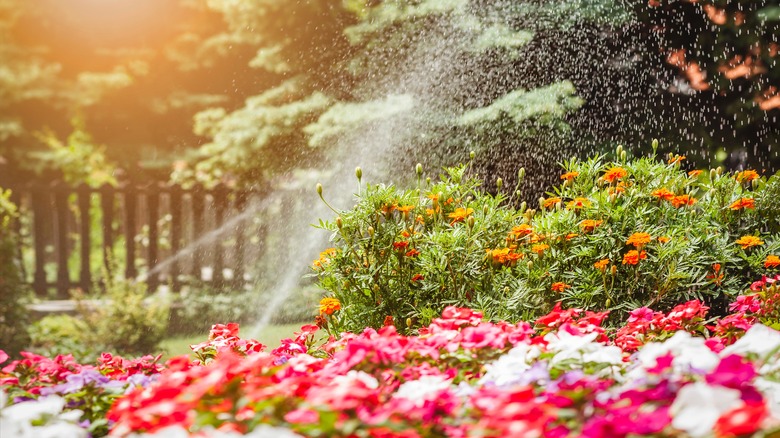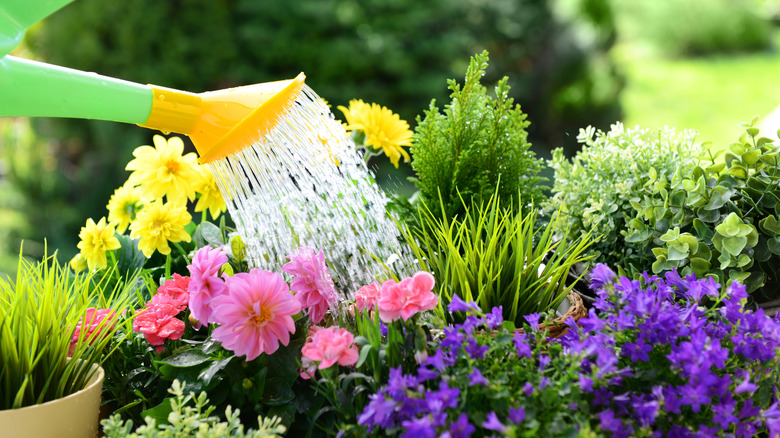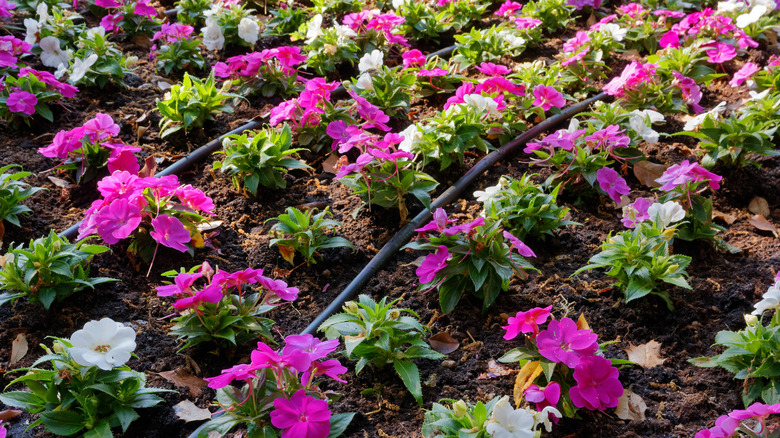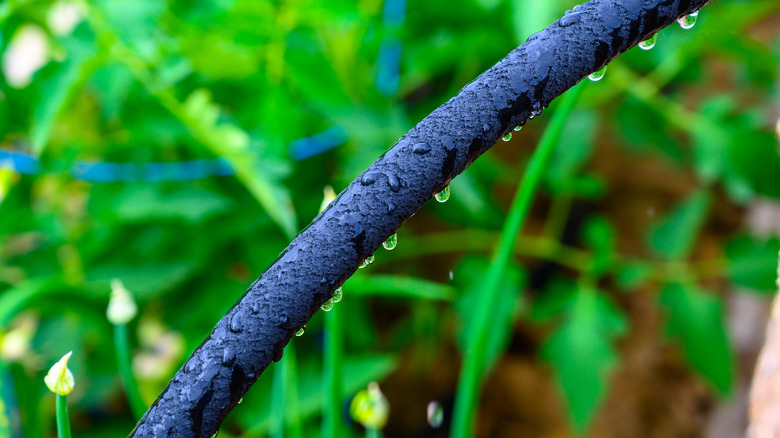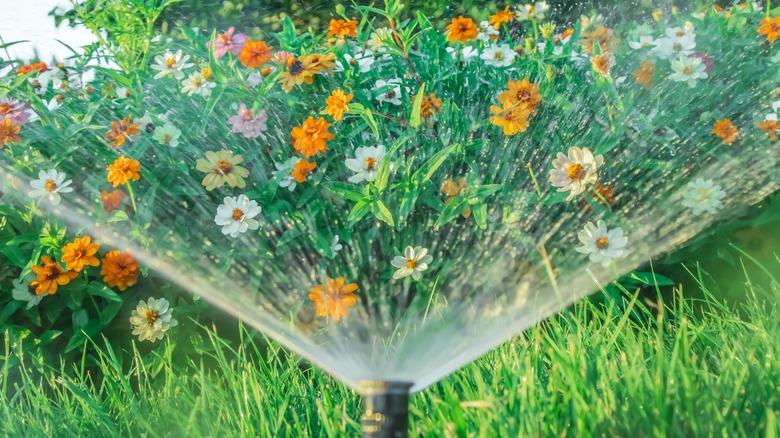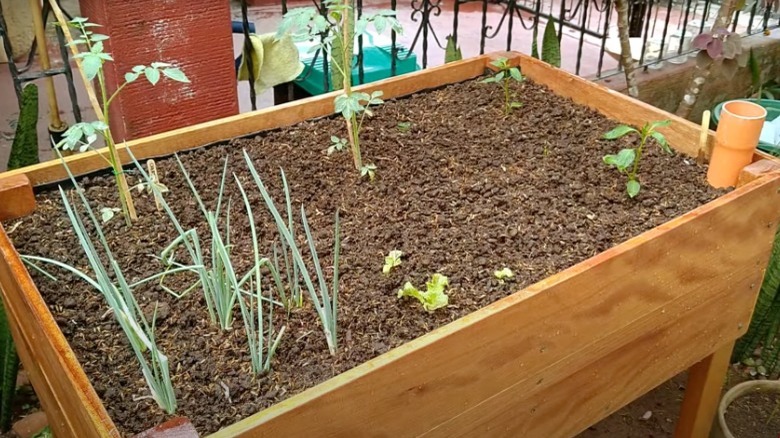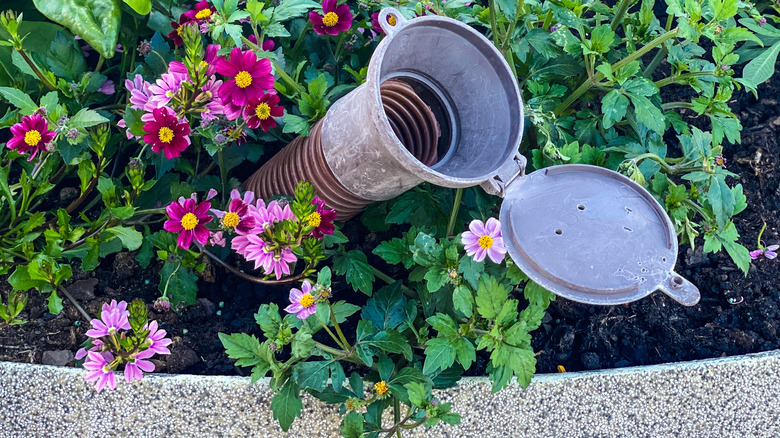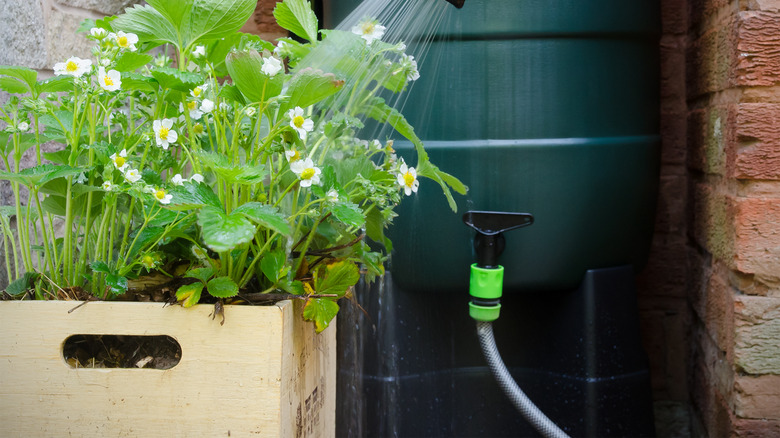The Best Irrigation Systems For Flower Beds
We may receive a commission on purchases made from links.
Have you just finished planting beautiful flower beds and are now looking for irrigation systems to water them? Well, there are many options to consider. But simply put, there is not one single irrigation system that will be best for all circumstances and all flower beds. The choice you make will depend on your budget, the amount of space you have to work with, and your schedule. Before coming to a decision, review your options and ask yourself a few important questions. Aside from how much money you can spend, do you want to be outside watering your beds on a daily basis, or would you prefer a system that still needs to be monitored but runs by itself on timers? How about one that lets you go away for weeks at a time?
If reducing your water footprint is important, there are irrigation systems that are more efficient than others. Perhaps saving money matters more, and you're looking for the most budget-friendly option. Of course, for the DIY enthusiasts, nothing matters more than having a big project to tackle over the weekend, and there's an irrigation system for that too! Here are all the different kinds to consider.
By hand with a watering can or garden hose
If sticking to a tight budget is at the top of your priority list, then rest assured that a simple garden hose will suffice as a flower bed irrigation system. A trip to any garden center or hardware store will reveal an array of hose lengths and different types of nozzles. Pick a hose that will easily stretch as far away from the house as you need it to and a nozzle that offers a gentle spray that will mimic rainfall. You could also go for a handheld watering can.
What you save in money, you will pay out in time. Watering by hand is the most time-consuming way to irrigate your flower beds, and depending on your schedule, it could become a hassle to tackle this chore on a regular basis. To the best of your ability, try to tend to your flowers in the early morning hours. Watering late in the day is often ineffective because too much moisture evaporates when it gets hot instead of being absorbed. Point either the spray nozzle or the watering can at the soil below the flowers and foliage. Think of this process as watering the ground and the roots; the drier the tops of the plants stay, the better, because excess moisture can lead to fungal and bacterial diseases.
Drip irrigation systems
Of all the options out there, many gardeners will tell you a drip irrigation system is the cream of the crop. These consist of thin, flexible tubing that lays on top of the soil and lets out slow, consistent drops of water that go directly to the roots. They can be installed by anyone and moved around as needed. Drip systems irrigate the soil below the foliage so they cut back on the fungal and mildew issues that come from wet leaves, and they are considered the most efficient use of water. As such, they also cut back on runoff and evaporation.
If you plan to install drip irrigation lines throughout your flower beds, you'll have some research to do, but it's nothing over the top. The system is made up of tubing with emitters where the water will come out. Automatic or manual control valves allow you to shut off the drip in certain areas while maintaining the flow elsewhere. You may also need pressure regulators to keep the water flowing properly. Drip irrigation systems are designed to be versatile, so you can place the emitters where they are needed and leave other areas of soil dry. The entire system can run on an automated and timed schedule, or you can manually turn it on and off.
Drip systems require maintenance to deal with occasional clogs, though filters and pressure regulators can help keep those to a minimum. You'll also need to pay attention to the placement of the emitters to ensure they're hitting the right spots and your flowers are thriving.
Soaker hoses
Soaker hoses are similar to drip irrigation systems but are much simpler and, therefore, limited in their capabilities. But, hey, that makes them a lot cheaper! The basic setup is that they look like a hose with holes every few inches. It does not allow for pressure adjustments, nor does it let you keep some sections open and flowing while closing off others. Soaker hoses should only be used on level ground, and they need to lay flat, so if yours has been coiled for a long time, it may prove difficult to straighten out. That said, this is a low-cost option that is great for beginners.
Rather than purchasing one at the store, you can make your own soaker hose out of an old garden hose in just a few quick steps. And if you have a leaky one with a bunch of holes in it lying around, consider yourself lucky because you're already halfway there! Grab your hose and a drill fit with a ¼ inch drill bit. For best results, lie the hose flat and only drill holes into one side every few inches along the entire length of it. One thing you may need to buy new is a hose cap for one end. With this in place, the water will be forced out of the holes, creating a soaker hose.
Spray and sprinkler systems
When it comes to sprinkler systems, you can have a single unit that attaches to your hose that you move around the yard as needed, or you can have an irrigation specialist install an in-ground system with heads that pop up out of the ground when the water is turned on and go back down when it's off. That way, the heads don't become trip hazards or get caught in lawn mower blades. These systems run on electricity and employ hydraulics, sensors, timers, pipes, and valves to do the work of irrigating your property.
Sprinkler systems can be set up in zones for differing needs. For instance, your flower bed will require a lot more water than that one tree in the backyard, so your flower bed sprinkler heads will be programmed to come on more often and stay on longer. Because these systems are complex, installation can easily run you at least a few thousand dollars. Such an investment may be best left to homeowners who want to use one irrigation system throughout their property to take care of a large lawn, a vegetable garden, the flowers, trees, shrubs, etc. If you only want to irrigate a flower bed, stick to an inexpensive sprinkler hose attachment.
One major downside to sprinklers is that they water plants from above. This is not always recommended because the leaves end up getting the bulk of the water instead of the soil. Wet, soggy foliage creates a perfect environment for germinating spores that can lead to plant diseases.
Sub-irrigated raised beds
Sub-irrigated raised bed is a fancy way of saying self-watering planter. With these units in place, your plants will soak up water from reservoirs underneath the beds through a process called capillary action. The best system can take care of its plants for up to a month without a second thought from the owner. Units like these include water level indicators and overflow valves, and because the water comes from below and does not touch the leaves, instances of fungal and bacterial diseases are cut down. Other benefits of self-watering planters are that they can be situated anywhere you want and moved if necessary, and all of the soil contained within will be of a higher quality than the dry sand or clay you may have in your yard.
Self-watering beds can be purchased as complete setups or kits that you put together. You can also build one from scratch with a 30-gallon plastic tote or wood. This DIY project is pretty involved when it comes to planning and materials. Aside from all the tools necessary to build the wooden frame, you'll also need liners, a fill tube, drain pipes, and more. It's a big undertaking, but the end result is a very effective and efficient planter that lets you go on vacation without worrying about the health of your flowers.
Self-watering flower pots
If the sub-irrigated raised garden bed sounds like a good idea but is too much of a project (or expense) for right now, you can use the same principle on a much smaller scale with individual self-watering flower pots. They will have the same kind of setup where you'll pour water into a tube to fill the empty reservoir below. There are planters designed for herb gardens as well as hanging baskets, so there's a lot of versatility with this option.
With smaller pots, you can easily arrange and rearrange a flower bed according to the seasons or your whims. Just remember to keep them all within range of the garden hose for easier reservoir filling. For anyone who lives in a colder climate zone, self-watering pots may be the answer to maintaining flowers throughout the colder months. Even if you don't use them for everything in your flower bed, you could use them for a few key plants you know you'll want to bring inside before winter hits.
Rain barrel pump systems
Rain barrels have come a long way. Gone are the days of simply collecting rainfall as it pours down the gutters; now, you can purchase a rain barrel pump system that allows you to hook up the garden hose to the barrel. Jet pumps sit on the outside of the unit and pull water through. Or you can use submersible pumps, which do the opposite by sitting inside the unit and pushing the water out. To figure out which type of pump is best for your needs, consider how often you're likely to use the system. If all you intend to do is occasionally water your flower beds, a jet pump will suffice; just know that it is the louder of the two. For those who plan to use their rain barrel for more applications and on a more regular basis, you might want the quieter submersible. Consider, too, whether you live somewhere that receives enough precipitation to keep the rain barrel full.
Rain barrel pump systems start simple with a collection container and a pump, and they run the gamut to complex setups involving pressure tanks. Pressure tanks are recommended for off-grid households that are relying on rainwater for all of their internal and external needs. The tank creates the necessary force to run the water far and wide, which is probably not needed if you're only watering flower beds.
